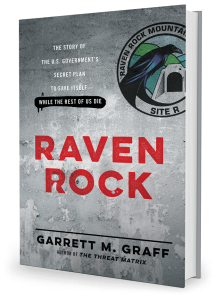Below is the text of my monthly “Editor’s Letter” in the new issue of Washingtonian.
—-
I doubt a single person in Washington woke up on Wednesday, November 7, and wished that the election had gone on longer. By the time voting finally rolled around this year, everyone was fed up—enough with the TV ads, the robo-calls, and most of all the wall-to-wall election commentary. Nearly all of it seemed negative. (Actually, “only” 91 percent of Mitt Romney’s advertising was, as was 85 percent of Barack Obama’s.)
We’ve never had an election as over-commentated as this one. No corner of the campaign seemed too small to warrant note, no gaffe too insignificant to debate, no talking point too obvious to tweet. There was even an abundance of commentary about the commentary—who was right, who was wrong, who was fair, who was lying.
Yet the thing that arguably mattered most—the strength and sophistication of Barack Obama’s ground game—received scant attention. Reporters would write a story here or there about it; others would allude to the campaign’s technological prowess or quote David Axelrod’s confident figures about how the President would win swing states by turning out minority voters. But by and large, the campaign’s efforts are still a mystery. We know little about how the Obama team’s amazing databases and voter-ID targeting actually worked, nor do we have a good sense of exactly how the campaign targeted voters to boost minority turnout and win convincingly even with 7 million fewer votes than in 2008.
The mysteries surrounding the organizing efforts of Obama for America are a reminder that, despite the seeming explication of everything and everyone in today’s media-saturated world, often the most important stories are still out of sight.
Similarly, this issue of the magazine features articles that remind us that the most interesting stuff often takes place behind the scenes, outside the spotlight—from the drama surrounding Washington’s oldest art museum (page 64) to a new distillery opening in an abandoned warehouse off an unmarked DC street (page 60) to the US Naval Observatory’s official timekeeper and his critical work that allows your cell phone and the Internet to keep running (page 45).
I was particularly taken by the photo on page 26 of the Institute of Heraldry, an obscure corner of the government that’s in charge of producing and maintaining the presidential seal—among many other seals, flags, and medals. Who knew that each presidential seal, from the White House logo that hangs in the briefing room to the seal on the chief executive’s podium, was handmade in an out-of-the-way office at Fort Belvoir?
Then there’s our cover package on marriage (page 72), a relationship that plays out almost entirely behind closed doors. Probably no topic in the world is more complicated than the seemingly straightforward union between two people who love each other. Outwardly, most marriages appear happy, but we know not all of them are. Divorce has become much more common, as has waiting years to get married in the first place.
While the pageant and tradition of weddings seem universal, no two unions are the same. I can’t count the number of times I’ve sat through the “I do’s,” Pachelbel’s Canon, a reading from First Corinthians (“Love is patient, love is kind . . .”), or the breaking of the glass. Yet from that point on, there’s very little guidance on what works and what doesn’t—maybe some lessons, positive or negative, from our parents or shared advice with friends over drinks or a barbecue. Even the very institution is being redefined, as evidenced by Maryland’s recent approval of same-sex marriage.
Our cover section offers tips for anyone looking to better his or her relationship, including from some of the area’s leading divorce attorneys—an unlikely but valuable source on what makes great marriages work and bad ones fail.
The cornerstone of the package, though, is a fascinating and heart-wrenching story by Matt Mendelsohn, a well-known local wedding photographer who set about learning how his former clients’ lives have unfolded in the years since their “one perfect day” (page 82). This much is clear: None of the couples he interviewed anticipated the way their marriage would actually turn out.



Recent Comments